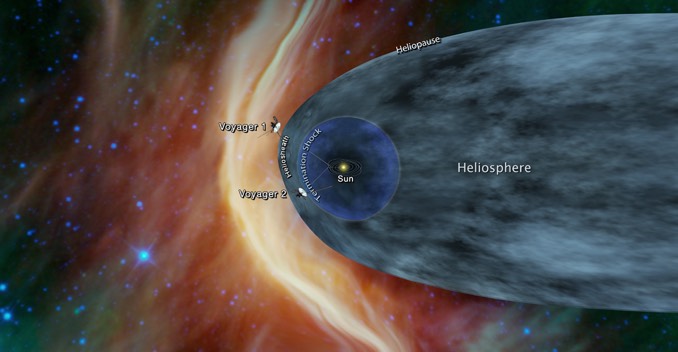
The Voyager 2 probe, now 17.7 billion kilometres (11 billion miles) from Earth, is detecting an increase in cosmic rays from outside the solar system, an indication the long-lived spacecraft is nearing the outer limits of the Sun’s influence and is about to sail into interstellar space.
For the past 11 years, Voyager 2 has been plowing through the outer reaches of the heliosphere, a vast protective bubble around the solar system shaped by the Sun’s magnetic field and populated by electrically charged particles blown away in the solar wind. The outer edge of the heliosphere is known as the heliopause
In May 2012, the Voyager 1 spacecraft crossed the heliopause and became the first spacecraft to fly outside the solar system. Three months before that historic milestone, Voyager 1 detected an increase in cosmic rays similar to what Voyager 2 is experiencing now.
Since late August, Voyager 2’s Cosmic Ray Subsystem instrument had seen a 5 percent increase in the number of cosmic rays hitting the spacecraft. The probe’s Low-Energy Charged Particle instrument has detected a similar increase in high-energy cosmic rays.
But the heliopause moves in and out during the Sun’s 11-year solar cycle and it’s not yet clear when Voyager 2 will finally cross the boundary into interstellar space.
“We’re seeing a change in the environment around Voyager 2, there’s no doubt about that,” said Voyager Project Scientist Ed Stone at Caltech in Pasadena, California. “We’re going to learn a lot in the coming months, but we still don’t know when we’ll reach the heliopause. We’re not there yet, that’s one thing I can say with confidence.”



